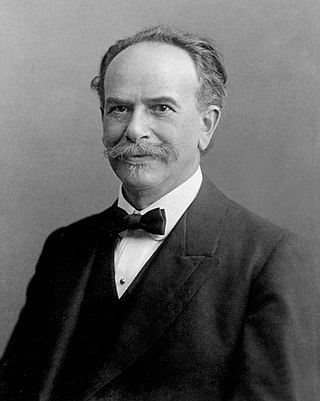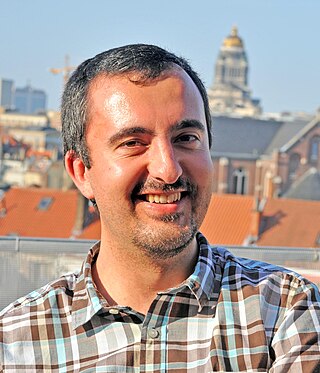Related Research Articles

Franz Uri Boas was a German-American anthropologist and ethnomusicologist. He was a pioneer of modern anthropology who has been called the "Father of American Anthropology". His work is associated with the movements known as historical particularism and cultural relativism.

Igloolik is an Inuit hamlet in Foxe Basin,Qikiqtaaluk Region in Nunavut,northern Canada. Because its location on Igloolik Island is close to Melville Peninsula,it is often mistakenly thought to be on the peninsula. The name "Igloolik" means "there is a house here". It derives from iglu meaning house or building,and refers to the sod houses that were originally in the area,not to snow igloos. In Inuktitut the residents are called Iglulingmiut.
Eskimo kinship is a category of kinship used to define family organization in anthropology. Identified by Lewis H. Morgan in his 1871 work Systems of Consanguinity and Affinity of the Human Family,the Eskimo system was one of six major kinship systems. The system of English-language kinship terms falls into the Eskimo type.
Robert Harry Lowie was an Austrian-born American anthropologist. An expert on Indigenous peoples of the Americas,he was instrumental in the development of modern anthropology and has been described as "one of the key figures in the history of anthropology".

Diamond Jenness,was one of Canada's greatest early scientists and a pioneer of Canadian anthropology.
Lancaster Sound is a body of water in the Qikiqtaaluk Region,Nunavut,Canada. It is located between Devon Island and Baffin Island,forming the eastern entrance to the Parry Channel and the Northwest Passage. East of the sound lies Baffin Bay;to the west lies Viscount Melville Sound. Further west a traveller would enter the M'Clure Strait before heading into the Arctic Ocean.

The National Museum of Ethnology,also known as the Minpaku (民博),is the largest ethnographic museum in Japan. It is Japan's largest research institute in the academic disciplines of humanities and social sciences. It is located within the Expo Commemoration Park,which is on the former grounds of Expo '70,in Suita,Osaka Prefecture.
James W. VanStone was an American cultural anthropologist specializing in the group of peoples then known as Eskimos. He studied at the University of Pennsylvania and was a student of Frank Speck and Alfred Irving Hallowell. One of his first positions was at the Field Museum of Natural History in Chicago. In 1951,following completion of graduate studies,he joined the faculty of the Department of Anthropology at the University of Alaska in Fairbanks. In 1955 and 1956,he conducted fieldwork with the Inuit at Point Hope,Alaska. Beginning in the summer of 1960,he started field work among Chipewyan Indians,living along the east shore of Great Slave Lake in Canada's Northwest Territories among eastern Athapaskans for a period of eleven months over three years. He died of heart failure.

Pudlo Pudlat,was a Canadian Inuit artist whose preferred medium was a combination of acrylic wash and coloured pencils. His works are in the collections of most Canadian museums. At his death in 1992,Pudlo left a body of work that included more than 4000 drawings and 200 prints.

The tautirut is a bowed zither native to the Inuit culture of Canada.
Hugh Brody is a British anthropologist,writer,director and lecturer.

Noel B. Salazar is a sociocultural anthropologist known for his transdisciplinary work on mobility and travel,the local-to-global nexus,discourses and imaginaries of 'Otherness',heritage,cultural brokering,cosmopolitanism and endurance.

William Wyvill Fitzhugh IV is an American archaeologist and anthropologist who directs the Smithsonian's Arctic Studies Center and is a Senior Scientist at the National Museum of Natural History. He has conducted archaeological research throughout the circumpolar region investigating cultural responses to climate and environmental change and European contact. He has published numerous books and more than 150 journal articles,and has produced large international exhibitions and popular films. Of particular note are the many exhibition catalogues he has had edited,which make syntheses of scholarly research on these subjects available to visitors to public exhibitions.

Ulayu Pingwartok was a Canadian Inuk artist known for drawings of domestic scenes and nature.
A vidéothèque is a virtual or physical library of videos. The concept originated as installations in museums or art galleries,but has been extended to video libraries on websites and physical fixed libraries and mobile libraries. Noted examples include those at ARTCENA,fr:Centre national du théâtre,Paris,Minpaku,Osaka and Ars Electronica in Linz
Ippei Shimamura is a Japanese anthropologist who is best known for his ethnographic work on shamanism and ethnic identity among Mongol Buryats,which has won multiple awards. Currently he is a Professor of Cultural Anthropology and Mongolian Studies in the National Museum of Ethnology in Osaka. Working for 15 years in the School of Human Cultures at the University of Shiga Prefecture in Hikone,he joined the Minpaku on April 1st in 2020. Between April 2004 and September 2005 he was a research fellow at the National Museum of Ethnology in Osaka,and between October 2011 and March 2012 he was a visiting scholar at Mongolia and Inner Asian Studies Unit in the Department of Social Anthropology at the University of Cambridge in the UK. Shimamura originally studied law at Waseda University (1988-1993),but after visiting Mongolia with a film crew he decided to return to that country in 1995 and began his studies as an anthropologist. He completed a master's degree in Ethnology at the National University of Mongolia in Ulaanbaatar in 1998,being the first person from Japan to do so. Returning to Japan after living in Mongolia for 6 years,Shimamura achieved his Ph.D. in March 2004 at The Graduate University for Advanced Studies (SOKENDAI) in Hayama in Kanagawa Prefecture. His dissertation research was later published as a book,first in Japanese and later in English under the title The Roots Seekers:Shamanism and Ethnicity Among the Mongol Buryats (2014).
Charlie Sivuarapik (Sheeguapik) was an Inuk sculptor,illustrator and storyteller from Povungnituk in Nunavik,Quebec,Canada who settled in the then newly established village of Puvirnituq in the 1950s where he remained for his life. Due to declining illness,he was unable to hunt to support his family. Sculpting became a way for Sivuarapik to support himself and his family economically until he died of tuberculosis in 1968.
Nalenik Temela was an Inuit sculptor from Kimmirut.
Akesuk Tudlik,commonly known simply as Tudlik (1890–1966),was an Inuit printmaker and carver from Cape Dorset,Canada. He is best known for his stylized carvings of animals,particularly birds with round eyes.
References
- 1 2 Graburn, Nelson H. H. (November 18, 1963). Taqagmiut Eskimo Kinship Terminology (Thesis). University of Chicago. ProQuest 302115230.
- 1 2 3 4 Graburn, Nelson H. H. (January 1964). Taqagmiut Eskimo Kinship Terminology (PDF) (Thesis). Ottawa, Ontario: Department of Indian and Northern Affairs, Canada (INAC). Retrieved October 24, 2017.
- ↑ Salvador, Mari Lyn. Cuando Hablan Los Santos: Contemporary Santero Traditions from Northern New Mexico. Albuquerque: Maxwell Museum of Anthropology. 1995: xi
- ↑ "CV Nelson Graburn" (PDF). CRIA - Research Network in Anthropology. 2007. Retrieved October 24, 2017.
- ↑ Krupnik, Igor, ed. (February 16, 2016). Early Inuit Studies: Themes and Transitions, 1850s-1980s. Smithsonian Institution Scholarly Press. p. 592. ISBN 978-1935623700 . Retrieved October 24, 2017. The book is a "synthesis" of the "18th Inuit Studies Conference held in Washington, DC on October 24–28, 2012." The "Foreword" by Graburn is entitled "From 1959 to 2014: Personal Observations on 55 Years of Change". The editor of the book, Igor Krupnik is "curator of Arctic and Northern Ethnology collections at the Smithsonian National Museum of Natural History in Washington, D.C."
- 1 2 "Nelson H. H. Graburn". biography. University of California, Berkeley. nd. Retrieved October 24, 2017.
Graburn had "visiting appointments at the National Museum of Civilization, Ottawa, Le Centre des Hautes Études Touristiques, Aix-en-Provence, the National Museum of Ethnology (Minpaku) in Osaka, the Research Center for Korean Studies, Kyushu National University, Fukuoka, the International Institute for Culture, Tourism and Development, London Metropolitan University, Federal University of Rio Grande do Sul, Porto Alegre, Brazil."
- ↑ "Nelson H. H. Graburn". Profile update. Berkeley Research. nd. Retrieved October 24, 2017.
- ↑ Qikiqtani Truth Commission Community Histories 1950–1975 (Report). Kimmirut: Qikiqtani Inuit Association. April 2014. p. 49. ISBN 978-1-927095-62-1.
- ↑ Eskimos without Igloos. Boston: Little, Brown. 1969.
- ↑ Graburn, Nelson H.; Ertl, John; Tierney, R. Kenji, eds. (2007). Multiculturalism in the New Japan: Crossing the Boundaries Within. Asian Anthropologies. Vol. 6. Berghahn Books. p. 264. ISBN 978-1-84545-226-1.
- ↑ "Review of "Multiculturalism in the New Japan: Crossing the Boundaries Within"". Berkeley.
- ↑ Graburn, Nelson H. H. (1977), Tourism: the Sacred Journey
- ↑ Graburn, Nelson H. H., ed. (June 1977). Ethnic Tourist Arts: Cultural Expressions from the Fourth World . Berkeley: University of California Press. pp. 444. ISBN 0520029496.
- ↑ Jules-Rosette, Bennetta (1984). The Messages of Tourist Art: An African Semiotic System in Comparative. Springer. ISBN 978-1-4757-1827-0.
- ↑ Dark, Philip J.C. (1978). "Review of Ethnic Tourist Arts: Cultural Expressions from the Fourth World". American Anthropologist. 80 (2): 400–401. doi:10.1525/aa.1978.80.2.02a00300.